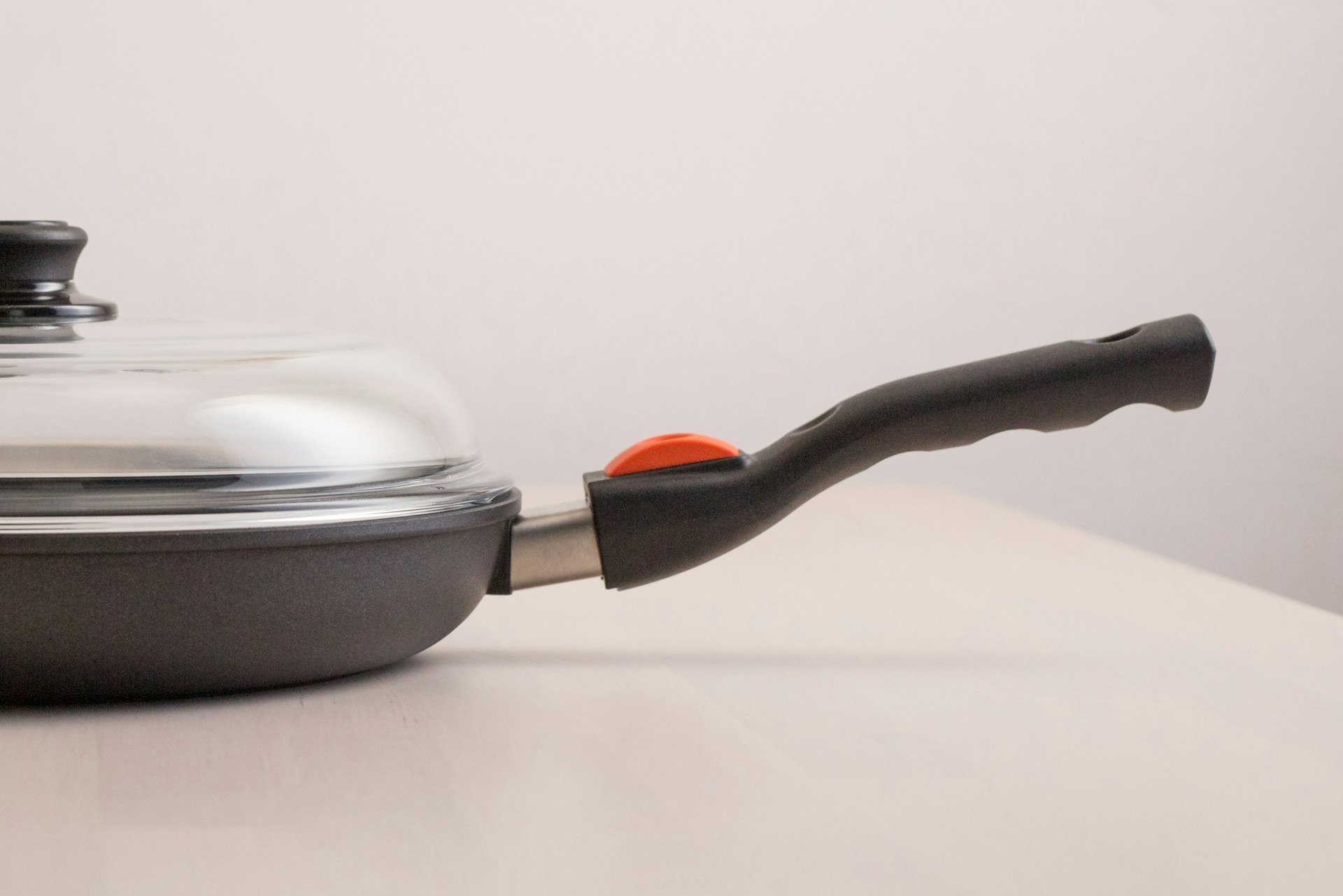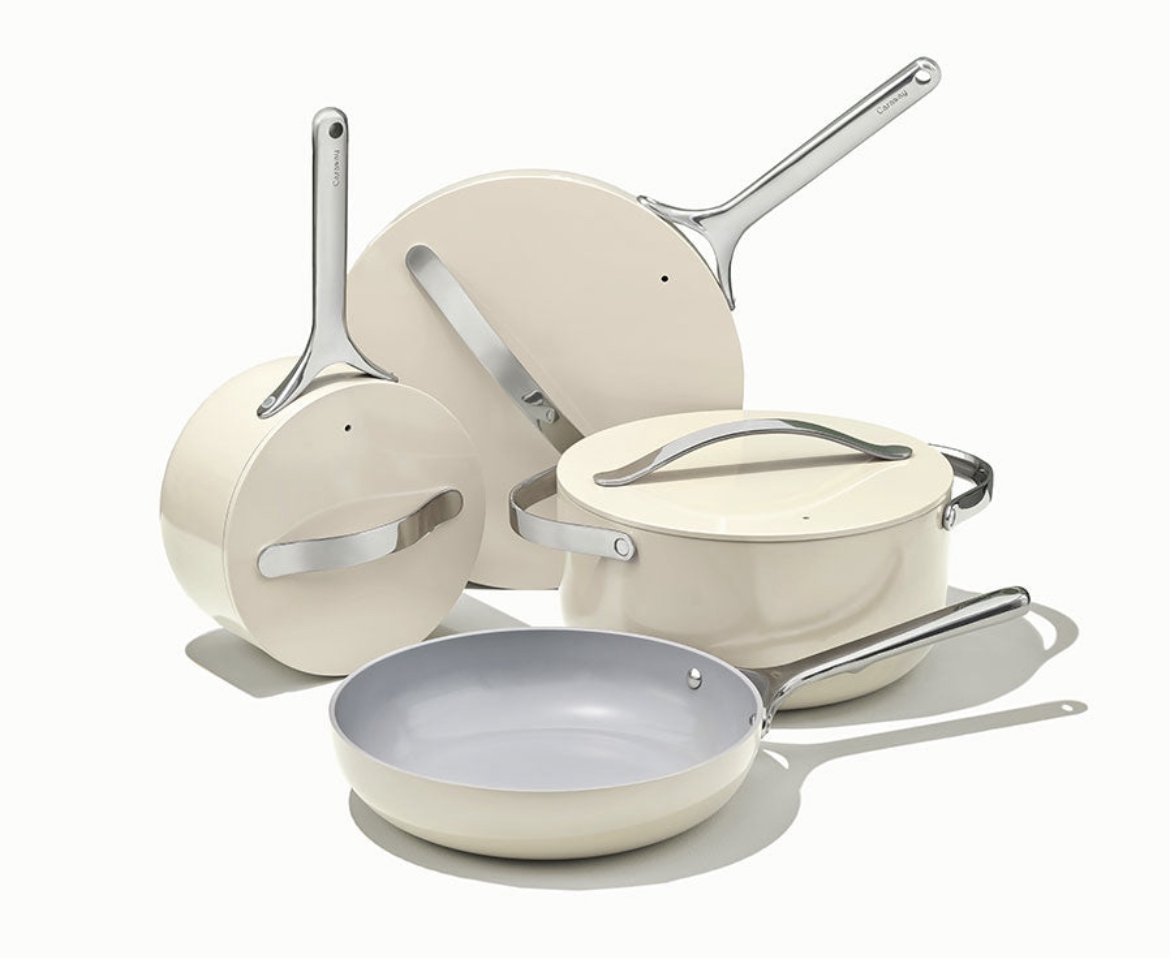Elemental Cooking
The earliest recorded cooking vessels were made of stone, then clay, and finally metal. When non-stick cookware came onto the scene in the 1940s, it was considered a major advancement in how we prepare food and deemed an appropriate next step into the modern age. What often is forgotten is that this was also the same time period of rapid chemical development. Teflon™ is no exception. Now eighty years later we realize there are health consequences to this widespread use of chemicals, including those found in our cookware.
The History of Teflon™
Accidentally stumbled upon in 1938 while scientists were working with gasses involved with refrigerants, a polymerized compressed sample of tetrafluoroethylene was discovered. This white waxy substance was named polytetrafluoroethylene (PTFE), otherwise known as Teflon™.
Since 1946 the compound has been used commercially in a variety of industries, including aerospace, communications, electronics, industrial processes, architecture, and of course, non-stick cookware. Today, it is also used in fabric and carpet protectors, waterproofing for rain gear, and as a wire and cable coating.2 The discovery has been described as “an example of serendipity, a flash of genius, a lucky accident—even a mixture of all three.”1
While considered a scientific breakthrough by many, the use of the compound in cookware is controversial. Here’s why.

Safe to Use — Or Not?
Before 2013 all Teflon™ cookware products contained an environmental pollutant by the name of PFOA, which is used in the synthesis of PTFA. According to a 2017 review published in the journal of Environmental Science Pollution Research International, some reports have found PFOA is released as a toxic gas under normal cooking temperatures.2 Because of this, manufacturers switched to alternative chemicals, such as GenX. However, researchers suspect this compound has similar toxicity issues.
This is of concern because PFOA and by association GenX, pose serious risks to health, such as thyroid disorders, chronic kidney disease, liver disease, testicular and kidney cancer, infertility, and low birth weight.3,4,5,6,7 Disturbingly, a comparative study between 1999-2000 found PFOA in 98% of 2,094 serum samples.8
Other compounds still used in Teflon™ are also concerning, including PFAS (polyfluoroalkyl substances). While the risks are not fully understood, the U.S. Consumer Product Safety Commission has issued a statement about the potential risks of fluoropolymers in response to the Environmental Protection Agency expressing concerns about this chemical in drinking water.9,10
It is thought that Teflon™ is a generally safe material when used under 500ºF. When heated above this temperature, the coating breaks down and releases toxic fumes that cause what is known as Teflon flu, which entails fever, chills, headache, and body ache, which generally occurs 4-10 hours after exposure.11 Some have reported more severe effects, including lung damage. Under normal use, there is also another hazard: scratches and chipping if metal utensils are used, thereby causing microscopic fragments of the coating to lodge in food.
Many have stopped using Teflon™ cookware altogether due to the potential risks and health impacts. But non-stick cookware isn’t the only type that is problematic, aluminum and stainless steel can pose risks as well.
While not considered cookware per se, cooking food wrapped in aluminum foil or in disposable containers gives you an idea of the overall toxicity of this heavy metal and how readily it leaches into food. In fact, acidic foods such as meat and tomatoes that are cooked in aluminum can increase the metal amount in these foods by up to 378%.12
Is stainless steel better? It can be, except if it is scratched, worn, or burnt — at which point it can leach chromium and nickel into food. Cast iron and carbon steel tend to be safer, but for those who have issues with an overabundance of iron in their system, cast iron isn’t the best choice. Carbon steel can also be tricky to season properly and requires maintenance to keep it semi non-stick. Thankfully, there is a better way to cook without giving up the convenience of a non-stick while still protecting health.
My Favorite Cookware, Bakeware, & Food Storage Solutions
Personally, my family uses Caraway cookware — a ceramic non-stick line of pots, pans, and bakeware. The mineral-based coating effortlessly releases food — without the need to season the pan. It is free of lead, cadmium, PTFE, and other toxic chemicals. Simply put, it is the most healthy cookware you can use and still enjoy non-stick convenience. As with any non-stick surface, make sure to only use wood, silicone, nylon, or (in a pinch) plastic utensils.
Sets are equipped with easy-to-use storage solutions to keep your kitchen organized and pristine. Plus, it’s gorgeous to boot with many colors to choose from.
If you are ready to upgrade your cookware, Caraway is an outstanding choice. Stop by their website today to learn more.
Here’s to many days of happy and healthy cooking!
Nicole Apelian
References
- The History of Teflon™ Fluoropolymers, Chemours Teflon™. https://www.teflon.com/en/news-events/history
- Sajid, M., & Ilyas, M. (2017). PTFE-coated non-stick cookware and toxicity concerns: a perspective. Environmental science and pollution research international, 24(30), 23436–23440. https://doi.org/10.1007/s11356-017-0095-y
- Vélez, M. P., Arbuckle, T. E., & Fraser, W. D. (2015). Maternal exposure to perfluorinated chemicals and reduced fecundity: the MIREC study. Human reproduction (Oxford, England), 30(3), 701–709. https://doi.org/10.1093/humrep/deu350
- Tarapore, P., & Ouyang, B. (2021). Perfluoroalkyl Chemicals and Male Reproductive Health: Do PFOA and PFOS Increase Risk for Male Infertility?. International journal of environmental research and public health, 18(7), 3794. https://doi.org/10.3390/ijerph18073794
- Steenland, K., Fletcher, T., Stein, C. R., Bartell, S. M., Darrow, L., Lopez-Espinosa, M. J., Barry Ryan, P., & Savitz, D. A. (2020). Review: Evolution of evidence on PFOA and health following the assessments of the C8 Science Panel. Environment international, 145, 106125. https://doi.org/10.1016/j.envint.2020.106125
- Bartell, S. M., & Vieira, V. M. (2021). Critical review on PFOA, kidney cancer, and testicular cancer. Journal of the Air & Waste Management Association (1995), 71(6), 663–679. https://doi.org/10.1080/10962247.2021.1909668
- Shearer, J. J., Callahan, C. L., Calafat, A. M., Huang, W. Y., Jones, R. R., Sabbisetti, V. S., Freedman, N. D., Sampson, J. N., Silverman, D. T., Purdue, M. P., & Hofmann, J. N. (2021). Serum Concentrations of Per- and Polyfluoroalkyl Substances and Risk of Renal Cell Carcinoma. Journal of the National Cancer Institute, 113(5), 580–587. https://doi.org/10.1093/jnci/djaa143
- Calafat, A. M., Wong, L. Y., Kuklenyik, Z., Reidy, J. A., & Needham, L. L. (2007). Polyfluoroalkyl chemicals in the U.S. population: data from the National Health and Nutrition Examination Survey (NHANES) 2003-2004 and comparisons with NHANES 1999-2000. Environmental health perspectives, 115(11), 1596–1602. https://doi.org/10.1289/ehp.10598
- “EPA Takes Bold Action to Alert the Public About Deadly Risks of PFAS & PFOS in Water Supply; if There is No Safe Level in Water, CPSC Must Examine Whether We Should Allow PFAS & PFOS in Consumer Products” United States Consumer Product Safety Commission, June 17, 2022. https://www.cpsc.gov/About-CPSC/Commissioner/Richard-Trumka/Statement/EPA-Takes-Bold-Action-to-Alert-the-Public-About-Deadly-Risks-of-PFAS-PFOS-in-Water-Supply-if-There-is-No-Safe-Level-in-Water-CPSC-Must-Examine-Whether-We-Should-Allow-PFAS-PFOS-in-Consumer-Products
- “PFAS Explained” EPA. https://www.epa.gov/pfas/pfas-explained
- Shimizu, T., Hamada, O., Sasaki, A., & Ikeda, M. (2012). Polymer fume fever. BMJ case reports, 2012, bcr2012007790. https://doi.org/10.1136/bcr-2012-007790
- Turhan S. (2006). Aluminium contents in baked meats wrapped in aluminium foil. Meat science, 74(4), 644–647. https://doi.org/10.1016/j.meatsci.2006.03.031





